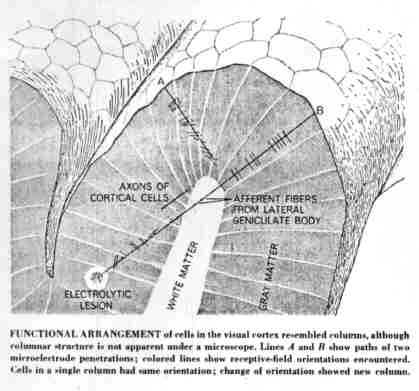Norman
Allan | ||||
chapter four, part two
Analysis
of Visual Information
in Mammalian Neural Networks
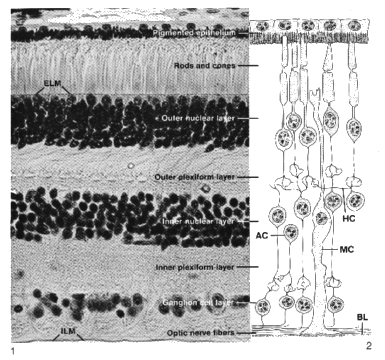
In the eye,
in the retina,
we see three
(sequential)
layers
of neurons
and we could
consider these
to be three
(sequential)
representations
of the visual field: ~.
first:
rods and cones
second: "intermediary level"
third:
: "ganglion level"
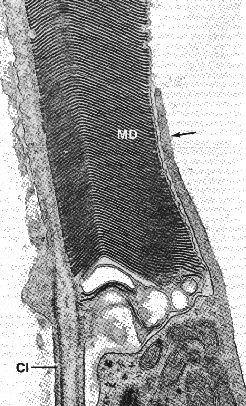
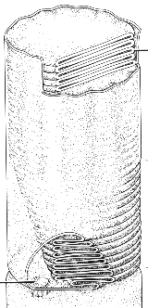
The first
order of
neurons are the rods
and cones themselves
and
these give us
a pixilated point by point
mapping of the visual field
(with some "coding" for colour:
which we'll
ignore for now)
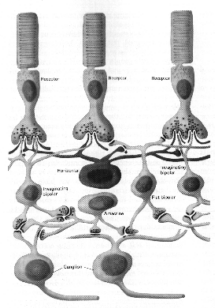
The second neural level
(which is again in the retina)
is formed by the "bipolar"
and the "horizontal cells"
and these are processing
information so that at
the third
neural level,
the "ganglion cell" layer,
information
is organized
as "surround contrast" fields
- that is
to say if you shine
a light at the centre of its
own tiny little
visual field
it will increase (or decrease)
its rate of firing,
but if you
shine a light on the
periphery of its field it will do the
opposite, 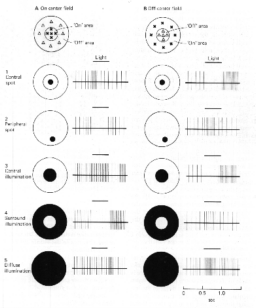
decrease (or
increase), its rate of firing.
The up-shot is that the ganglion
cells
responds to points of light, or to edges.
(but not to a
solid block of light extending across its visual field).
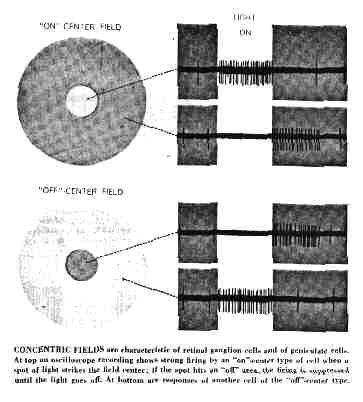
from Hubel's "The Visual Cortex of the Brain" Scientific American
November 1963
So in the
"ganglion cell" layer of the retina
we again have a representation of light
in the eye's visual field, but
it has been
processed through "surround contrast"
to highlight
spots edges, contrasts.
And of course the two synaptic relays
through
which this processing has occurred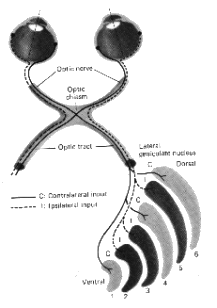
takes time. So we have iterations
of the visual fields falling down time.
In the
forth order neuron, in the lateral geniculate bodies
(LGB),
visual information is processed to
integrate information
from the two eyes,
depth parallax stuff, stereoscopic vision,
and is
organized in six overlapping leafs (visual fields)
three from the contralateral
eye, leafs 1, 4 and 6;
three from the ipsilateral eye, leafs 2, 3 and 5.
The visual fields are again contrast surround fields
though
rather larger than those of the ganglion cells.
The
4th order neurons of the LGB
project through the visual tract
to cells in the occipital visual cortex.
occipital
visual "area 17" in the cat
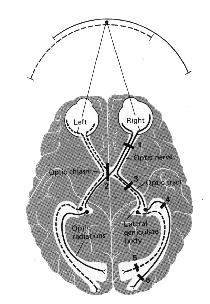
In the cortex fifth order neurons
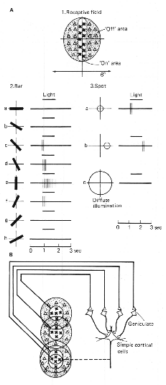
that
Hubel and Weisal call "simple cortical cells"
respond to bars and
edges in the visual field.
Simple cortical cells receive input
from 4th
order neurons (contrast surround fields)
arranged along a linear axis in the
visual field.
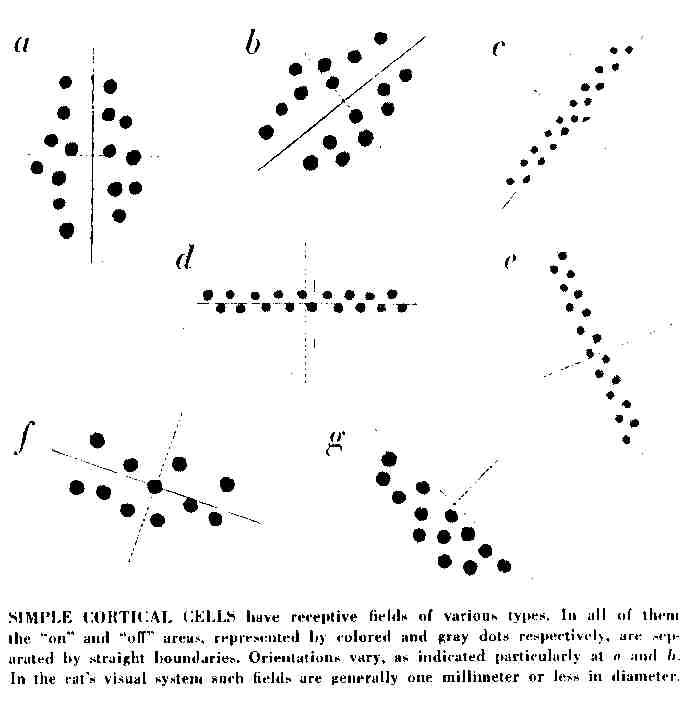
from Hubel's
"The Visual Cortex of the Brain" Scientific American November
1963
In area
17 there are also
sixth order neurons
that Hubel andWiesal
call
"complex cortical cells" 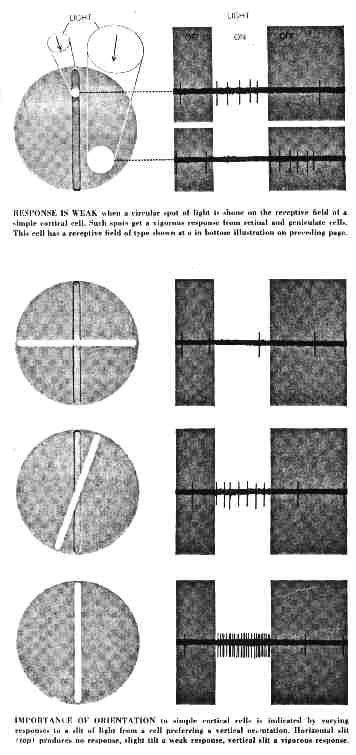
that are responding
to moving bars or edges,
which we may imagine
are wired from the "simple cells"
The
illustration of "simple cortical cells" to the right is from Hubel's
"The Visual Cortex of the
Brain" Scientific American November 1963
Cortical
area 17 is arranged in columns
such that all the cells (simple
and complex)
within the column are responding
to bars and edges with one particular orientation,
as
is illustrated below.
Beyond area 17 our simple and complex cells appear to be projecting to occipital visual cortex area 18, though the visual field here is flipped (vertically). What properties in the visual field that cells in visual 18 are responding to is not known.
we
should of course note here
that the cortex too is layered
(INSERT ILLUSTRATION)
What
is germane to our discussion
is the fact that we have all the successive
iteration of the visual field, each a little different as the information is processed,
each a little delayed (by synaptic relay), and no doubt, all of them resonating
together.
Chapter 4: neural nets
